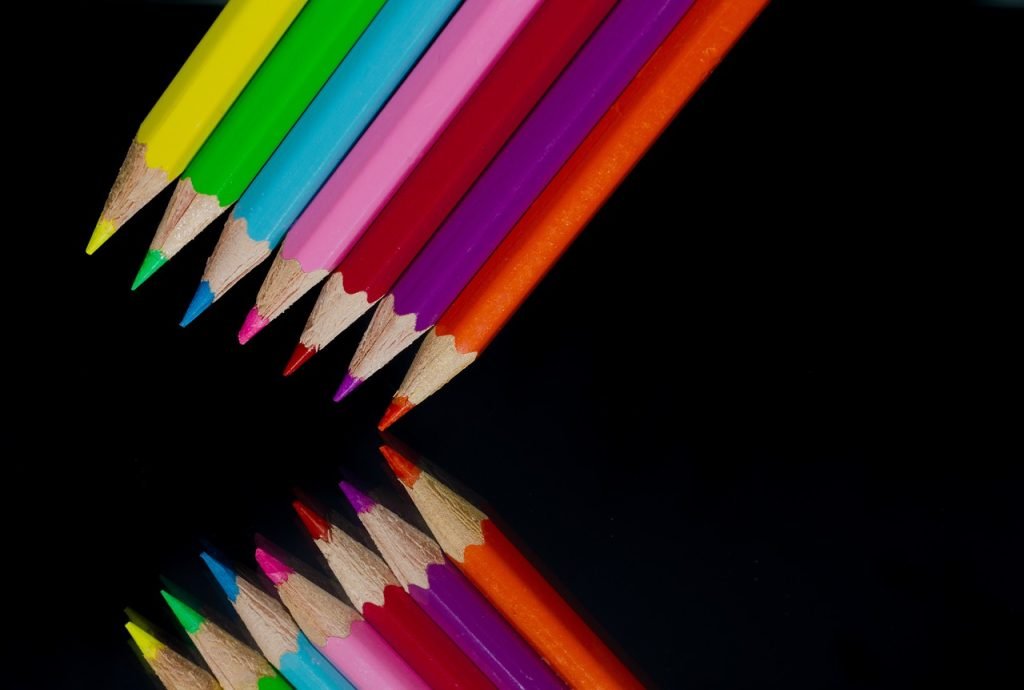Creating a successful outdoor natural dyeing and textiles workshop can be a rewarding and enjoyable endeavor that connects you with nature and your community. By carefully planning the logistics, gathering the right materials, and fostering a welcoming environment, you can inspire participants to create beautiful, eco-friendly textiles. Make sure to choose a scenic, accessible location, and provide clear instructions and hands-on guidance. Encourage experimentation with natural dyes from local plants and emphasize sustainability. Most importantly, cultivate an atmosphere of curiosity and creativity, ensuring everyone leaves with newfound skills and a sense of accomplishment. Have you ever wondered how you can create a successful outdoor natural dyeing and textiles workshop? If so, you’re in the right place! Hosting these workshops can be incredibly rewarding, not just for you but also for your participants. The joy of working outdoors, the beauty of natural dyes, and the sense of community that emerges are all fantastic benefits. Let’s dive into the details of how you can make your workshop a roaring success.

This image is property of pixabay.com.
Understanding the Basics of Natural Dyeing
Before you can teach others, you’ll need a solid understanding of the basics of natural dyeing. This part of the process involves extracting colors from natural sources, which can be plants, minerals, or even insects.
What Are Natural Dyes?
Natural dyes come from materials found in nature, such as fruits, vegetables, flowers, leaves, bark, and even some types of minerals and insects. Unlike synthetic dyes, they are biodegradable and less harmful to the environment.
Types of Natural Dyes
Here is a table to help you understand the different types of natural dyes and their sources:
| Type of Dye | Source | Common Colors |
|---|---|---|
| Plant-Based | Leaves, flowers, bark, fruits | Yellows, greens, browns |
| Mineral-Based | Earth, rocks, minerals | Reds, oranges, yellows |
| Insect-Based | Cochineal bugs (for example) | Bright reds and magentas |
Historical Context
Natural dyeing has been around for centuries. Ancient civilizations like the Egyptians and the Chinese used natural dyes for clothing, art, and rituals. Understanding its history adds a rich layer to your workshop narrative, making it more engaging for your participants.
Planning Your Workshop
Successfully hosting an outdoor natural dyeing and textiles workshop takes careful planning. Here’s everything you need to consider.
Selecting a Location
When choosing a location, consider factors like accessibility, space, and the natural environment. An open park, garden, or nature reserve can be ideal.
Necessary Permits
Check if you need any permits or permissions to host an outdoor event in your chosen location. Local authorities can provide you with the necessary information.
Season and Weather Considerations
The best seasons for outdoor workshops are usually spring and summer. Always have a backup plan for inclement weather, like renting a tent or having a nearby indoor space available.
Procuring Materials
Having the right materials is essential for a successful workshop. Organize your supplies well in advance.
Natural Dye Ingredients
Ensure you have a variety of natural dye ingredients. Common ones include:
- Turmeric for yellow
- Red cabbage for blues and purples
- Onion skins for browns and oranges
Tools and Equipment
You’ll need a range of tools and equipment, such as:
- Stainless steel pots or dyeing vessels
- Wooden spoons for stirring
- Rubber gloves
- Strainers and funnels
Fabrics
Choose fabrics that absorb natural dyes well. Cotton, silk, and wool are excellent choices. Always pre-wash the fabrics to remove any grease or impurities that might hinder dye absorption.
Safety Gear
Make sure you have safety gear on hand. Gloves, aprons, and eye protection are a must when dealing with any type of dyeing process.
Structuring the Workshop
Structure is key to a well-run workshop. Having a clear plan will help you stay organized and make the experience enjoyable for everyone.
Introduction
Start with a welcoming introduction. Briefly explain who you are, what the workshop is about, and what participants can expect to learn.
Safety Briefing
Always start with a safety briefing. Emphasize the importance of using gloves and eye protection, and discuss the safe handling of various materials.
Hands-On Demonstration
Perform a live demonstration to show the steps involved in natural dyeing. Here is a basic outline you could follow:
- Extracting the dye: Show how to heat the materials to extract the colors.
- Preparing the fabric: Explain the mordanting process, which helps the fabric absorb the dye.
- Dyeing the fabric: Demonstrate how to properly submerge and stir fabrics in the dye bath.
- Finishing touches: Show the washing and drying process to set the dye.
Guided Practice
Let participants try it themselves under your supervision. Be available to answer questions, correct mistakes, and provide guidance.
Wrap-Up and Q&A
Finish with a Q&A session. This is a great time to address any lingering questions and gather feedback. Also, take a moment to thank everyone for attending.

This image is property of pixabay.com.
Marketing Your Workshop
A successful workshop needs participants, and participants need to know about your event. Effective marketing can make all the difference.
Creating a Marketing Plan
First, outline your marketing strategy. Decide where you will promote your workshop and what methods you’ll use. Social media platforms, local community boards, and email newsletters are excellent channels.
Social Media Engagement
Use social media to build excitement around your workshop. Post regular updates, share behind-the-scenes photos, and engage with your audience through polls and Q&A sessions.
Collaboration and Partnerships
Partnering with local businesses, eco-friendly brands, or craft stores can increase your reach. These collaborations can help you access a larger audience and add credibility to your event.
Creating Flyers and Posters
Design eye-catching flyers and posters to distribute around your community. Include essential details like date, time, location, and how to register.
Handling Finances
Understanding your finances is crucial for the sustainability of your workshop.
Budgeting
Create a detailed budget that includes all expenses and expected income. Here is a simple budget table for illustration:
| Expense Category | Estimated Cost |
|---|---|
| Location Permits | $100 – $200 |
| Materials and Supplies | $300 – $500 |
| Marketing | $50 – $150 |
| Miscellaneous | $50 – $100 |
| Total | $500 – $950 |
Pricing Your Workshop
Determine a fair price for your workshop that covers your costs while remaining attractive to participants. Consider offering early-bird discounts or group rates.
Financial Tracking
Keep track of all expenses and income. This will help you assess the financial success of your workshop and make necessary adjustments for future events.

This image is property of pixabay.com.
Participant Management
Managing participants effectively can make or break your workshop experience.
Registration Process
Make it easy for people to register. Online registration forms are a convenient option. Gather essential information like contact details and any special requirements they may have.
Communication
Keep an open line of communication with your participants. Send out reminders, provide them with a list of what to bring, and reassure them about what to expect on the day.
Feedback Collection
After the workshop, send out a feedback form to understand what went well and what could be improved. This information is invaluable for planning future workshops.
Sustainability and Ethical Practices
Hosting an outdoor workshop that revolves around natural dyeing is a wonderful opportunity to emphasize sustainability and ethical practices.
Eco-Friendly Materials
Choose eco-friendly and sustainably sourced materials wherever possible. Highlight these choices during your workshop to educate participants on the importance of sustainability.
Waste Management
Plan for waste management processes to minimize your environmental footprint. For instance, you could set up compost bins for organic waste and proper disposal units for any non-reusable materials.
Ethical Considerations
Embrace ethical practices such as fair compensation for any sourced materials and respect for local regulations and traditions. Encouraging participants to be thoughtful and conscientious in their crafting can have lasting positive impacts.
Enhancing the Participant Experience
Making sure that your participants have a memorable and enriched experience should be a primary goal.
Creating a Positive Atmosphere
Set the tone by creating a welcoming and inclusive environment. Greet everyone warmly and encourage interaction.
Educational Resources
Provide handouts or digital materials that participants can take home. These should include formulas, recipes, and additional resources for those who want to continue their dyeing journey.
Sampling and Displays
Set up displays of sample fabrics and finished products to inspire participants and give them an idea of what is achievable. You can also encourage them to bring any of their own work to show and tell.
Addressing Challenges
No event is without its challenges. Being prepared to handle them can save you a lot of stress.
Common Challenges
Common challenges include weather issues, material shortages, and participant misunderstandings.
Solutions
- Weather Issues: Always have a backup plan in place.
- Material Shortages: Keep extra supplies on hand.
- Participant Misunderstandings: Clear and open communication is key. Reiterate instructions and be patient.
Reflect and Improve
After the workshop, take some time to reflect on what went well and what didn’t. Use this information to make your next workshop even better.
Conclusion
Creating a successful outdoor natural dyeing and textiles workshop is a fulfilling endeavor that combines education, creativity, and outdoor enjoyment. With careful planning, a solid understanding of natural dyeing processes, and effective participant management, your workshop can be an unforgettable experience for everyone involved. Good luck, and happy dyeing!




